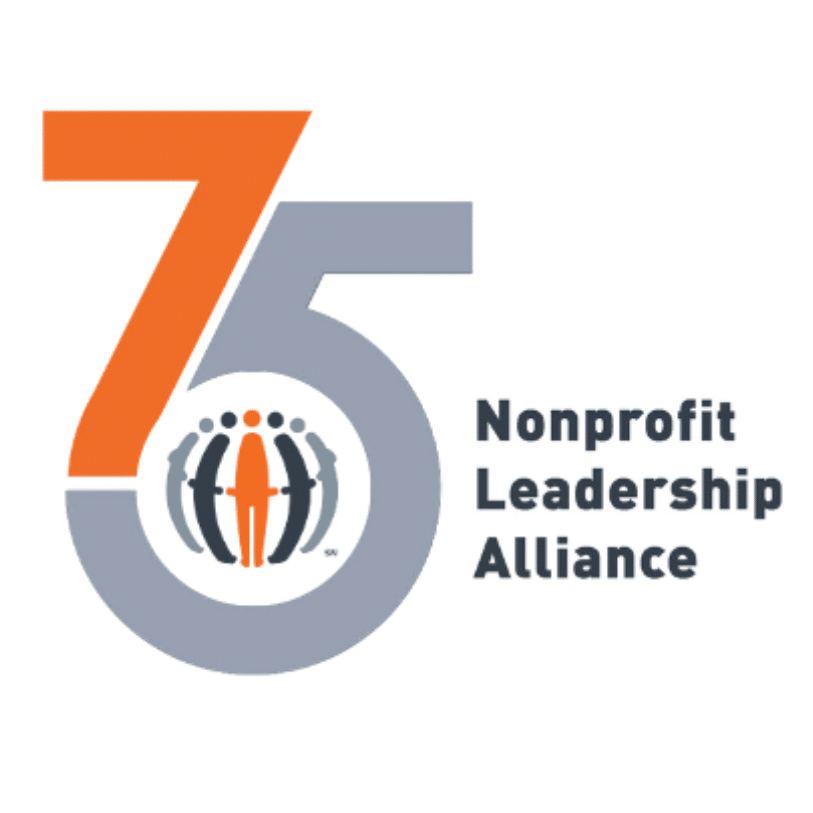In today’s world, a nonprofit organization’s website is often its primary communication tool. With the power to reach and engage a local or global audience, a well-designed website can help further your mission, build your nonprofit brand, and attract donors and supporters. One of the most effective ways to make your nonprofit’s website more compelling and impactful is by incorporating powerful visuals.
Visual content is known to leave a lasting impression, convey complex messages, and evoke emotions. This post will teach you how to add more powerful visuals to your website.
1. Review your nonprofit’s visual brand guidelines.
Your nonprofit’s visual brand guidelines are the foundation of your visual identity. Before you start adding new visuals to your website, it’s crucial to ensure that they align with your brand. Here are some tips for reviewing your organization’s visual brand guidelines:
Identify your visual brand elements.
Identify the key visual brand elements of your nonprofit. These elements include:
- Logos: Review your primary logo, but don’t forget about any variations or sub-logos. Promoting your brand may require creating alternative versions of your logo that can be used for different purposes, such as a specific logo for social media profiles.
- Color Scheme: Most organizations have strong primary and secondary colors that represent them, but what other colors can be used to supplement and expand your brand, or draw attention to specific content?
- Fonts: Note the fonts used for your logo and marketing materials, and make sure they’re consistent across all web pages and communication materials.
- Imagery Style: Understand the type of imagery and photography style that represents your brand. For example, do you want people facing the camera in posed shots or shots that show your work in action? Should the focus of the image be in the center, or should it be left or right aligned?
- Icons and Graphics: Identify any specific icons or graphics used in your branding, and how they should be used. Can icons be used on any page? Is there a specific icon library that is used on your nonprofit’s website?
Typically, you can review these elements by visiting your organization’s brand guide (or another resource where you keep track of these elements). Also, if you’ve made recent changes to your visual brand, make sure they’re reflected in these resources.
Align with your nonprofit’s mission and values.
The best nonprofit websites out there have visuals with a clear connection to the organization’s mission and values. When visuals are aligned with what your nonprofit stands for, they reinforce the organization’s purpose, evoke the right emotions, and enhance the overall impact of the message.
Focus on choosing visuals that resonate with the core essence of your mission. For example, if your organization’s mission revolves around environmental conservation, using images of lush green landscapes, diverse wildlife, and sustainable practices reinforces your commitment to the cause.
The colors, fonts, and design elements used in visuals can also reflect the values that you uphold. For instance, if you value transparency and openness, using clean and simple design elements with a preference for clear, easy-to-read fonts can convey this message effectively.
You should also incorporate images that showcase the real people and communities you serve. Authenticity is key in establishing credibility, and real photographs of beneficiaries, volunteers, and staff members engaging in the organization’s activities create a human connection.
2. Choose the visuals you want to include on your website.
Once you’ve reviewed and refreshed your understanding of your visual brand, it’s time to choose the right visuals for your website. Regardless of the type of visuals you decide to include, they should address your audience’s preferences and interests, align with your mission and values, and maintain consistency with your existing visual brand.
Here are some types of visuals nonprofits can use on their websites:
- Photos. It’s always best when you have images directly from your supporters or programs, but the expansive stock photo library available on the internet allows you to find the right images, if you search for them.
- Videos. Videos are a powerful medium for storytelling for nonprofits. Share success stories, behind-the-scenes footage, or informative content through engaging video clips.
- Infographics. Infographics are excellent for presenting statistics, data, and complex information in a visually appealing and easy-to-understand format.
- Background Images. Thoughtfully-selected background visuals not only enhance the aesthetic appeal of the website but also convey a powerful narrative, leaving a lasting impression on visitors.
- Data Visualizations. If your nonprofit deals with data and statistics, create visual representations such as charts and graphs to make your information more accessible and relatable.
- Memes and GIFs. Memes and GIFs can inject humor or playfulness into your website, making it more engaging and relatable to your audience.
- Interactive Maps. For nonprofits working in multiple locations or addressing geographic issues, interactive maps can provide a visually engaging way to present information.
3. Create your visuals.
After deciding on the types of visuals you want to incorporate, it’s time to create them. You can work with web design professionals for high-quality visuals, but if you’re on a tight budget, there are several free or cost-effective tools available for nonprofits to use.
Here are some of our favorite options:
- Your phone’s camera and photo editing app. Modern smartphones have powerful cameras that can capture high-quality images, but most people don’t know that they also provide modern photo editing capacities.
- Canva for easy graphic design. Canva is a user-friendly online graphic design tool that offers pre-made templates, AI capabilities, and a wide range of customization options.
- Google Fonts for downloading fonts. Download and use these fonts for your website’s text content, but also within static images that are being placed on the website.
- Google Charts for creating charts and graphs. Google Charts is a free tool that allows you to create interactive and customizable charts and graphs. Use it to display data and statistics in an engaging way.
- PicMonkey for editing pictures. PicMonkey is an online photo editing tool that offers a range of features for enhancing and customizing your images, from basic editing to creative effects. It comes with a hefty monthly fee, but can create a lot of efficiencies in creating website graphics and photos.
- Giphy for accessing GIFs. Giphy is a popular platform for finding and sharing GIFs. Use it to add animated elements to your website or blog posts, incorporating a touch of brevity into often serious and professional websites.
- Unsplash or Pexels for high-quality stock photos. Unsplash and Pexels are a great source of high-quality, royalty-free stock photos. You can find a wide variety of images that can complement your website’s visuals, and build your organization’s brand.
Remember to be mindful of copyright and licensing when using visuals from these sources to avoid legal issues. Always make sure you have a license for any image you use, provide proper attribution, and/or seek permission when required.
4. Optimize your visuals for web use.
While visuals are an essential element of a great website, you must ensure they do not hinder your website’s performance. Slow-loading, poorly optimized images can impact user experience and even affect your search engine rankings. Here are some tips for optimizing visuals for your nonprofit’s website:
- Choose the right file format. The WebP format offers several significant benefits for websites, making it an increasingly popular choice. WebP images are highly compressed, resulting in smaller file sizes compared to traditional formats like JPEG and PNG.
- Resize and compress images. As mentioned above, reducing the file size will improve your nonprofits website’s load time. While you can use image compression tools to further reduce file sizes without compromising quality, keep in mind that it’s always best to upload the image to the appropriate size.
- Use caching. Browser and server caching store website elements locally on a user’s device (or globally on a server), reducing load times for returning visitors. Enable caching for your visuals to improve site speed.
- Enable lazy loading for images. Lazy loading is a technique that loads images as users scroll down a page, reducing the initial page load time.
- Ensure responsive design. Make sure your visuals and images adapt to different screen sizes and devices. This is crucial for a positive user experience on mobile devices and tablets.
- Optimize for accessibility. To make your visuals accessible to everyone, add alt text to images. Alt text provides a description of the image for users with visual impairments who rely on screen readers, and it can also benefit your site’s SEO when you provide keyword rich alt tags.
Incorporating powerful visuals into your nonprofit’s website is a valuable investment in your organization’s online presence. By reviewing your visual brand guidelines, choosing the right visuals, creating them effectively, and optimizing for web use, you can create a visually appealing and engaging website that effectively communicates your mission and values.
Remember, visuals have the potential to inspire, educate, and connect with your audience, ultimately driving your nonprofit’s success in making a positive impact on the world.
Did you enjoy this story?
Get nonprofit tips and tools delivered right to your inbox by joining The Nonprofit Leadership Alliance Newsletter. Our bimonthly newsletter will make sure you know what’s happening with our network of social sector leaders.
Everette Pearsall Joins Nonprofit Leadership Alliance Board of Directors
The Nonprofit Leadership Alliance (NLA) is proud to announce the appointment of Everette Pearsall to the organization's board of directors. But who is Everette Pearsall, and why is his appointment so noteworthy? In this article, we'll
9 Essential Nonprofit Management Skills & Development Tips
As a nonprofit professional, you understand that investing in your staff is the best way to develop your organization. These changemakers are on the ground floor pushing initiatives forward, so you want your work environment
3 Nonprofit Tips to Secure Effective Corporate Partnerships
Your nonprofit has plenty of responsibilities to manage, from planning fundraising events to organizing community programs. If you’ve found yourself wishing for an extra support system, we’ve got the solution for you. Corporate partnerships with



